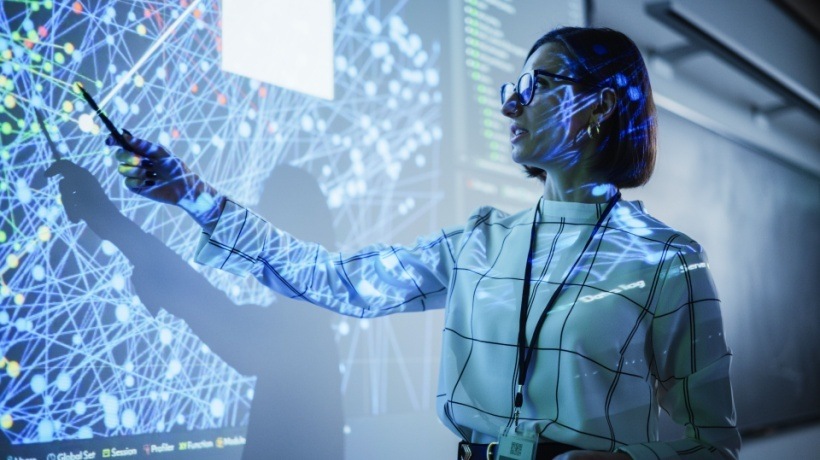Unveiling The Future Of Teaching And Learning With AI
The emergence of Large Language Models (LLMs) and other generative AI applications has sparked a transformative shockwave that is spreading rapidly across various domains. One of the domains that has been significantly affected is the education sector. While offering unprecedented potential for personalizing learning, aiding in creative tasks, and streamlining administrative duties, the widespread adoption of generative AI also poses challenges to academic integrity, as students increasingly rely on them for completing assignments, often bypassing the learning process. For educators and administrators, understanding the implications of AI is crucial—not only for safeguarding the integrity of education but also for adapting to the evolving landscape, where the role of an educator shifts towards guiding and facilitating learning in an AI-integrated environment. By demystifying AI's impact on education, we encourage educators to embrace a growth mindset and explore how to harness AI's potential while effectively managing its risks.
Challenges And Limitations Of AI In Education
The integration of generative AI into learning environments presents a complex array of opportunities and challenges that educators and students must navigate. While these tools offer the potential to enhance educational experiences, its misuse or overreliance can significantly impede the learning process. One primary concern is that students may use AI to complete assignments without the intention to learn, which could hinder their development of critical thinking and creativity. Although some counter-argue that AI allows learners to focus on higher-level cognitive tasks, this benefit is contingent upon the learner's genuine interest and intent to engage deeply with the subject matter.
Understanding the appropriate use of AI in learning is crucial. Overdependence, such as using AI to generate entire essays, could lead to a deterioration in the students' abilities to think critically and creatively and synthesize new knowledge. Cambridge International's guidelines on the use of AI for coursework, published in November 2023, addressed this by deeming the use of generative AI acceptable for certain tasks such as initial research and support but emphasized the importance of clear acknowledgment and critical assessment of AI-generated content for reliability and bias.
Educators are now tasked with the critical responsibility of monitoring and guiding how students interact with AI. To do this, they must be equipped to discern the nature of these interactions and provide constructive feedback, ensuring students refine their use of AI in a way that truly augments their learning. This involves teaching students to use AI tools ethically and responsibly, making sure all AI-generated material is properly cited, and helping them understand the potential pitfalls and limitations of AI-generated content.
Beyond the academic implications, there are broader concerns regarding the long-term cognitive development and emotional well-being of learners. The potential for AI systems to replace human interactions in educational settings poses a risk to the development of social-emotional skills, which are crucial for holistic human development. Therefore, ongoing research into the long-term impact of AI on intellectual and emotional growth is both necessary and urgent. As the landscape of education continues to evolve with AI technologies, it is imperative that educators remain vigilant and responsive to these challenges, ensuring that AI serves as a tool for enhancement rather than a detriment to the fundamental goals of learning.
Opportunities For Empowering Education With AI
Generative AI stands as a beacon of hope, offering a wide range of potential benefits poised to significantly enrich the educational landscape. One of the most prominent and transformative opportunities it offers is the personalization of learning, often regarded as the holy grail of education. Traditionally, individualized learning has been logistically and economically challenging to implement on a large scale. However, generative AI has the potential to overcome these barriers by creating tailored learning materials such as practice problems, study guides, and personalized feedback, allowing students to learn at their own pace and according to their unique needs and interests.
In addition to facilitating personalized learning, generative AI can assist in providing instant feedback and support outside the classroom. Tools like AI-powered chatbots can answer students' questions and offer support at any time, proving especially beneficial for those who require additional help or prefer to learn outside of traditional class hours. For instance, platforms like Archer utilize a Socratic approach to guide students through problem solving in mathematics, promoting deeper understanding and independent learning.
For educators, generative AI offers opportunities to automate time-consuming tasks like grading and writing student reports. This automation allows teachers to redirect their focus toward more impactful activities, such as providing personalized support and engaging directly with students. By reducing administrative burdens, AI can help create a more dynamic, responsive, and student-centered learning environment.
Moreover, generative AI can serve as a catalyst for creativity and idea generation. Students can leverage these tools to broaden their perspectives, explore new possibilities, and receive constructive feedback on their original ideas. By enhancing the creative process, AI not only aids in knowledge acquisition but also encourages students to develop innovative thinking skills crucial for success in an increasingly competitive world. As the capabilities of generative AI continue to evolve, the potential to revolutionize various aspects of education grows, promising a future where learning is more personalized, supportive, and creative.
Key Takeaways
As we delve into the complexities of generative AI in the education sector, it's crucial to understand the multifaceted challenges and limitations it brings along. Let's have a final look at both sides of this technological innovation.
Challenges And Limitations Of AI In Education
- Impediment to the learning process: Misuse or overreliance on AI can significantly impede the learning process.
- Hindrance to critical thinking and creativity: Overdependence on AI can deteriorate students' abilities to think critically and creatively.
- Appropriate use and ethical considerations: The need for educators to monitor and guide student interactions with AI, ensuring ethical use and proper citation of AI-generated material.
- Long-term cognitive and emotional development: Concerns over the impact of AI on the long-term intellectual growth and emotional well-being of learners.
- Replacement of human interaction: The risk that AI systems might replace essential human interactions in educational settings, potentially affecting the development of social-emotional skills.
Opportunities And Benefits Of AI In Education
- Personalization of learning: AI's ability to create tailored learning materials for personalized education, catering to individual student needs and interests.
- Instant feedback and support: The provision of immediate assistance and support to students outside the classroom through AI-powered tools like chatbots.
- Automating administrative tasks: Opportunities for educators to automate tasks such as grading and report writing, allowing them to focus more on student interaction and personalized support.
- Enhancement of creativity and idea generation: AI's role in broadening students' perspectives, aiding in the creative process, and encouraging innovative thinking.
- Dynamic and responsive learning environment: The potential for AI to contribute to a more dynamic, responsive, and student-centered learning environment.
As we move forward, it's essential for the educational community to engage in continuous dialogue, research, and adaptation to ensure that AI serves as a powerful ally in the pursuit of a more personalized, engaging, and innovative learning environment.
Additional Resources:
- ChatGPT and Beyond: The Generative AI Revolution in Education
- Empowering responsible AI practices
- Unlocking the Power of ChatGPT: A Framework for Applying Generative AI in Education








